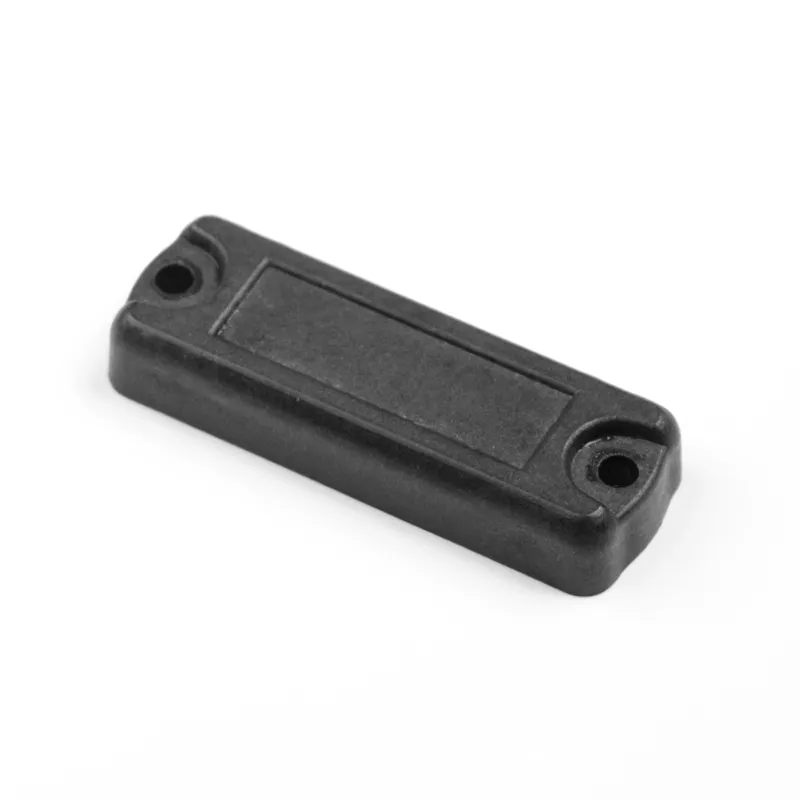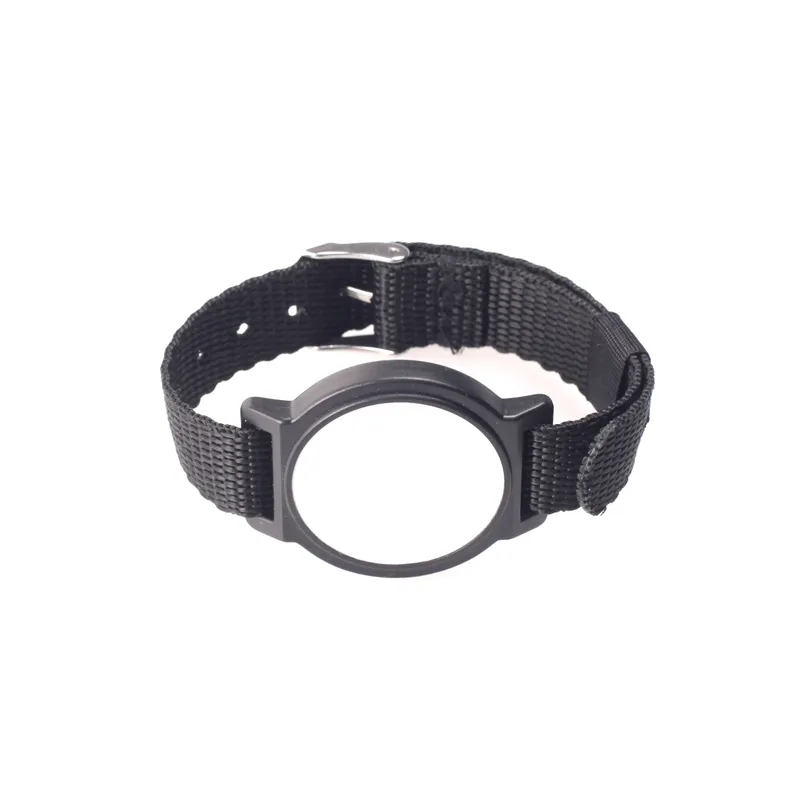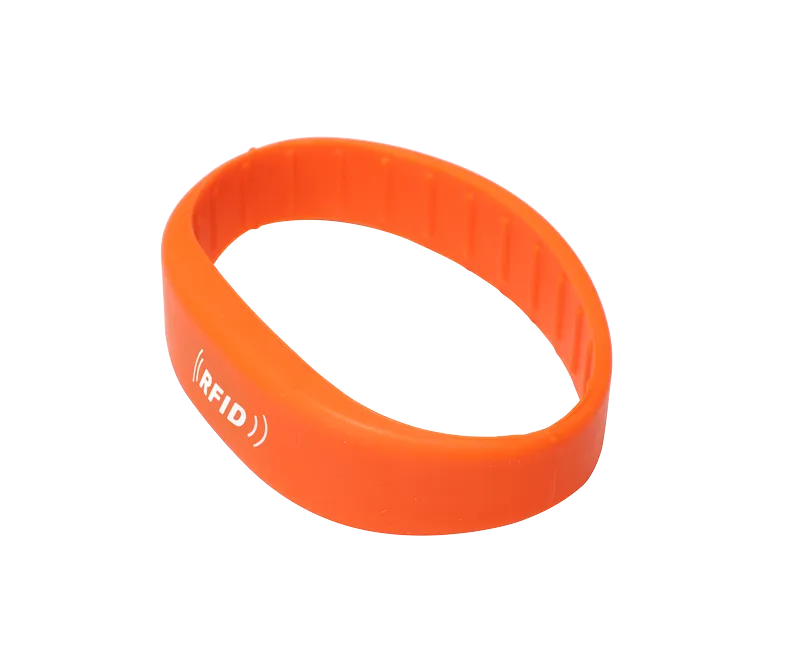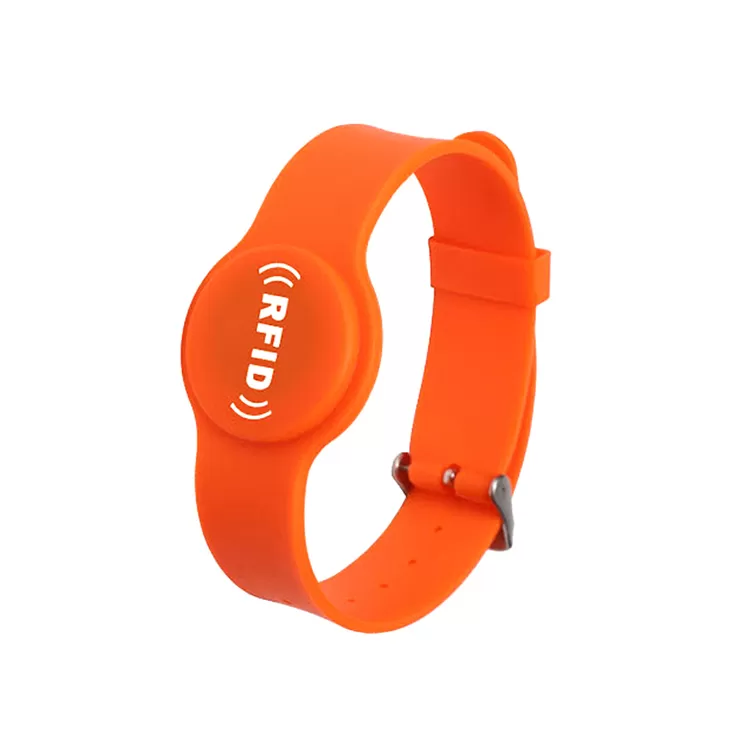RFID Ear Tags Para sa Baboy
MGA KATEGORYA
Gipili nga mga produkto

RFID Cloth Tag
Ang 7015H RFID Cloth Tag gidisenyo alang sa panapton o…

Mifare Keyfobs
Ang Mifare two-chip RFID Mifare Keyfobs usa ka praktikal, epektibo,…
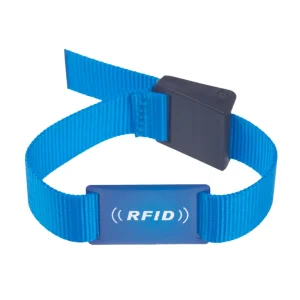
NFC Fabric Wristband
Ang NFC Fabric Wristband nagtanyag ug cashless nga pagbayad, paspas nga kontrol sa pag-access,…
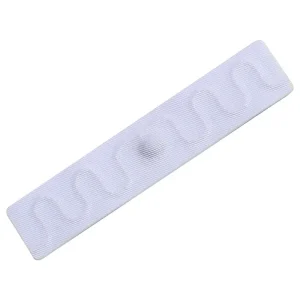
Tag sa Labahan sa Panapton sa RFID
Ang RFID Fabric Laundry Tag kay usa ka RFID fabric laundry tag…
Bag-ong Balita

Mubo nga Deskripsyon:
Ang RFID Ear Tags Para sa mga baboy usa ka bililhon nga himan sa industriya sa kahayupan, nagtugot sa tukma nga pagsubay ug pagdumala sa mga baboy. Kini nga mga tag nagtipig ug nagpadala sa usa ka talagsaon nga numero sa pag-ila, ingon man importante nga impormasyon sama sa breed, origin, estadistika sa pagtubo, ug mga rekord sa panglawas. Anaa sila sa daghang mga frequency ug dili tinubdan sa tubig, durable, ug snag-proof. Ang mga tag sa dalunggan sa RFID mahimong magamit alang sa pag-ila, automated nga pagdumala, ug paglikay sa epidemya. Mahimo silang gamiton kauban sa mga istasyon sa pagpakaon, mga istasyon sa pagtimbang, ug uban pang kagamitan aron masubay ang kahimsog, kaayohan, ug pagpalambo sa mga baboy sa tinuod nga panahon.
Ipakigbahin kanamo:
Product Detail
Ang RFID Ear Tags Para sa Baboy usa ka episyente ug tukma nga himan sa pagsubay ug pagdumala sa pag-atiman sa hayop. Aron mahimo ang hingpit nga pagmonitor ug indibidwal nga pagdumala sa mga baboy, kini nga radio frequency identification ear tag mahimong magtipig ug magpadala sa talagsaon nga numero sa pag-ila sa baboy uban sa ubang importante nga impormasyon sama sa breed, tinubdan, estadistika sa pagtubo, mga rekord sa panglawas, ug uban pa. Aron mahatagan ang lig-on ug kasaligan nga paglihok sa lainlaing mga kahimtang, Ang mga tag sa dalunggan sa RFID magamit sa daghang mga frequency, such as 125KHz, 134.2Khz, ug 860Mhz~960Mhz, depende sa mga panginahanglan ug mga senaryo sa aplikasyon.


Parameter
| Model No. | ET002 |
| Material | Polyether Type TPU |
| Espesipikasyon | Maxi, Dako, Medium |
| Timbang | 7g |
| Color | 1. Pula, dalag, berde, asul, puti, itom, kahel, gray ug uban pa. 2. Sumala sa mga kustomer’ mga hangyo |
| Feature | 1. Ang Laser o Pen Marking dili molubad sa tibuok kinabuhi sa mananap. 2. Tag mga materyales nga naghimo kanila nga hingpit nga dili mabasa sa tubig, durable, ug snagproof. 3. Tamperproof nga disenyo nga adunay mga tag nga babaye ug lalaki nga gihiusa ingon usa ka tibuuk nga bahin |
| Imprenta | 1. Laser pag-imprenta o Hot stamping;
2.Logo sa ngalan sa kompanya sa kustomer, Sunod-sunod nga mga numero; |
| Kinabuhi sa pagtrabaho | 3-6 tuig ug mas epektibo sa gasto |
| Panahon sa pagpanguna | 3-5 mga adlaw alang sa sample/stock |
| MOQ | 100mga pcs |
Mga bentaha
- Epektibo ug tukma nga pag-ila: Ang mga tag sa dalunggan sa RFID naggamit sa teknolohiya sa radio wave aron ipadala ang datos, nagtugot alang sa tukma ug episyente nga pag-ila sa mga baboy bisan kung ang nawong sa ear tag nahugawan o ang mga baboy naglihok.
- Large-capacity storage: Ang mga chips nga naghimo sa RFID ear tags makahimo sa pagtipig sa daghang datos, lakip ang lahi, origin, estadistika sa pagtubo, medikal nga mga rekord, ug uban pang detalye bahin sa baboy. Gipasayon niini alang sa mga prodyuser sa kahayupan ang pagdumala ug pagtimbang-timbang sa ilang datos.
- Real-time nga pagsubay: Paggamit sa RFID ear tags, ang mga producer sa kahayupan makamonitor sa nahimutangan, health, ug pagpalambo sa ilang mga baboy sa tinuod nga panahon. Kini nagtugot kanila sa pag-ila sa mga isyu sa sayo ug sa paghimo sa aksyon aron sa pagdugang sa breeding efficiency.
- Automated nga pagdumala: Aron matuman ang automated feeding, pagtimbang, ug uban pang mga kalihokan, pagminus sa interbensyon sa tawo, ug makadaginot sa mga galastuhan sa trabaho, Ang mga tag sa dalunggan sa RFID mahimong magamit kauban sa mga istasyon sa pagpakaon, mga istasyon sa pagtimbang, ug uban pang kagamitan.
- Pagsusi sa paglikay sa epidemya: Ang mga rekord sa pagbakuna sa baboy mahimong sayon nga ma-access, ang mga pagbakuna mahimong ipangalagad nga maalamon, ug ang pag-usik sa tambal ug sobrang paggamit mahimong mapugngan pinaagi sa RFID ear tags.

Espesipikasyon
| Mga detalye sa chip | |
| R/W Standard | ISO11784/11785 FDX |
| Frequency | 134.2 KHZ (Low frequency) |
| Temperatura sa Operasyon: | .-30℃ sa 60 ℃ |
| Mga detalye sa Ear Tag | |
| Color | Dilaw ( Ang ubang mga kolor mahimong ipasibo) |
| Material | TPU |
| Tensiyon | 280N–350N |
| Anti-collision standard | IEC 68-2-27 |
| Sumbanan sa vibration | IEC 68-2-6 |
| Gilay-on sa pagbasa | 10-25cm, sumala sa mga detalye sa lain-laing mga magbabasa. |
| Guarantee | tapos na 5 mga tuig |
Paggamit sa RFID ear tags para sa mga baboy
- Pagdumala sa pag-ila ug pagsubay sa identidad: Ang matag baboy giila pinaagi sa usa ka RFID ear tag nga adunay usa ka talagsaon nga numero nga nagtipig sa mga batakang detalye bahin sa hayop, lakip ang breed, provenance, ug petsa sa pagkatawo. Kini nga impormasyon dali nga mabasa sa RFID reader, makapahimo sa tukma nga pag-monitor ug pag-ila sa baboy. Kini makatabang sa pagsabot sa pagpalambo sa baboy, health, ug pagbakuna sa mga producer sa kahayupan, nga makapahimo kanila sa paghimo ug mas metodo nga mga programa sa pagpasanay.
- Automated nga pagpakaon ug pagtimbang: Aron matuman ang awtomatiko nga pagpakaon ug pagtimbang, feeding stations ug weighing apparatuses mahimong i-integrate sa RFID ear tags. Ang mga baboy mosulod sa feeding station, diin ang ilang mga ear tag ma-scan dayon sa usa ka RFID scanner. Ang feeding station unya tukma nga magpakaon sa mga baboy base sa ilang talagsaon nga mga kinahanglanon. Dungan, ang weighing apparatus makasubay sa mga baboy’ pagbag-o sa gibug-aton sa tinuud nga oras ug ipadala ang kasayuran sa sistema sa pagdumala sa pagpasanay, nga nagpasayon sa mga prodyuser sa kahayupan sa pagtimbang-timbang ug pagdesisyon.
- Pag-monitor ug pagkontrol sa mga isyu sa kahimsog: Ang mga tag sa dalunggan sa RFID adunay katakus sa pagsubay sa tinuud nga oras sa temperatura sa lawas, lebel sa kalihokan, ug uban pang health indicators sa mga baboy. Ang impormasyon dayon ipadala ngadto sa breeding management system. Kini nga mga datos mahimong gamiton sa mga prodyuser sa kahayupan aron masabtan ang kahimtang sa kahimsog sa ilang mga baboy, pag-ila sa dili maayo nga mga kahimtang sa sayo pa, ug paghimo ug angay nga aksyon. Ang mga tag sa dalunggan sa RFID mahimo usab nga magrekord sa regimen sa tambal sa baboy ug kasaysayan sa pagbakuna, nga nagtabang sa mga prodyuser sa baboy sa paghimo og mas abante nga mga pamaagi sa pagpugong ug pagpugong sa sakit.
- Pagbulag sa pagdumala sa pen ug labing maayo nga pagpakaon: Mga baboy nga lainlain og gibug-aton, mga edad, ug ang mga sirkumstansya sa pagpakaon mahimong gihan-ay sa lain nga mga kulungan sa baboy alang sa lain nga pagpakaon sa pen salamat sa bahin sa pag-ila sa RFID ear tag. Aron masiguro nga ang tanang klase sa baboy mahimong motubo ug molambo nga himsog, kini makatabang sa pagtino sa husto nga densidad sa pagkaon ug paghimo sa makatarunganon nga paggamit sa luna sa balay sa baboy. Dungan, Ang mga tag-iya sa kahayupan mahimong makapauswag sa kahusayan sa pagpasanay ug ma-optimize ang mga plano sa pagpakaon pinaagi sa pagtimbang-timbang sa datos sa baboy pinaagi sa sistema sa pagdumala sa pagpasanay..
- Pagdumala sa transportasyon ug logistik: Ang mga tag sa dalunggan sa RFID mahimong maghatag ug real-time nga pag-monitor ug pagdumala sa mga baboy sa tibuok proseso sa transportasyon ug logistik. Mahimo nimong mahibal-an ang gigikanan sa baboy, destinasyon, gitas-on sa biyahe, ug uban pang mga detalye aron mapanalipdan ang kahimsog ug kaluwasan niini pinaagi sa pagbasa sa kasayuran sa tag sa dalunggan niini. Ang mga tag sa dalunggan sa RFID naghatag dugang nga katakus sa pagrekord sa pagbakuna ug kahimtang sa kahimsog sa baboy samtang kini gidala., paghatag sa tigdawat importante nga reference data.
Ang mga prospect sa aplikasyon sa RFID ear tags para sa mga baboy sa pag-atiman sa hayop kay lapad kaayo, nga adunay dakong potensyal ug bili.
Una, ang tukma ug epektibo nga pagdumala sa pagsubay ug pag-ila posible gamit ang RFID ear tags. Kay ang matag baboy adunay kaugalingong pagkatawo, ang mga prodyuser sa kahayupan mas makahimo sa husto nga pagsubay sa kalamboan sa baboy, health, kasaysayan sa pagbakuna, ug uban pang mga detalye. Kini nga pamaagi sa pagdumala mahimong makunhuran ang sayup sa tawo, madugangan ang pagka-epektibo sa pagdumala sa pagpamuhi, ug pagpalambo sa kalidad ug kaluwasan sa mga butang.
Second, data-driven nga pagdumala sa desisyon mahimong matuman pinaagi sa RFID ear tags. Ang mga tag sa dalunggan sa RFID naglakip sa mga built-in nga sensor nga nagtugot kanila sa padayon nga pag-monitor sa importante nga impormasyon lakip na ang kahimtang sa panglawas, temperatura sa lawas, lebel sa kalihokan, ug mga kinahanglanon sa pagkaon sa mga baboy. Mahimong gamiton sa mga prodyuser sa kahayupan ang kini nga datos aron makahimo mga kritikal nga desisyon nga makatabang kanila nga mapadako ang mga iskedyul sa pagpakaon, kontrolahon ang mga gasto, ug madugangan ang kahusayan sa pagpasanay.
Ang mga tag sa dalunggan sa RFID makatabang usab sa pagdumala ug paglikay sa mga sakit. Ang mga prodyuser sa kahayupan dali nga makaila sa mga timailhan sa mga pag-ulbo sa sakit ug makapatuman sa angay nga mga lakang sa pagpugong aron maminusan ang pagkaylap ug pagkawala sa sakit pinaagi sa pag-monitor sa mga rekord sa pagbakuna ug paggamit sa tambal sa indibidwal nga mga baboy.
Ang mga kapabilidad ug lainlain nga aplikasyon alang sa RFID ear tags nagkadako samtang ang siyensya ug teknolohiya nagpadayon sa pag-uswag. Pananglitan, Ang real-time nga pag-monitor sa kahimtang sa kahimsog ug pagsubay sa lokasyon posible karon gamit ang mga tag sa dalunggan sa baboy, paghatag sa mga prodyuser sa kahayupan nga mas praktikal ug epektibo nga mga kapilian sa pagdumala.
Bisan pa niana, Adunay daghang mga kalisud sa paggamit sa mga tag sa dalunggan sa RFID bisan pa sa tanan nga mga benepisyo niini. Pananglitan, ang medyo mahal nga gasto sa mga tag sa dalunggan sa RFID mahimong makapugong sa ilang paggamit sa dinagkong pag-atiman sa hayop. Pa pa, Ang paggamit sa teknolohiya sa RFID nanginahanglan usa ka piho nga lebel sa kahanas sa teknikal, nga mahimong makapadako sa mga prodyuser sa baka’ gasto sa pagkat-on.
Ang mga tag sa dalunggan sa RFID alang sa mga baboy naghatag usa ka halapad nga potensyal nga aplikasyon sa pag-atiman sa hayop. Ang mga tag sa dalunggan sa RFID mahimong labi ug labi ka hinungdanon samtang ang teknolohiya nag-uswag ug nakakaplag bag-ong mga gamit tungod kay kini makatabang sa pagpataas sa mga sumbanan sa pagdumala sa pagpamuhi sa hayop, pagpalambo sa kalidad ug kaluwasan sa produkto, ug ubos nga gasto sa pagpasanay.
![Taghimo sa Rfid Tag [Wholesale | Om | Odm]](https://www.fjrfidfactory.com/wp-content/uploads/2024/04/logo.webp)








